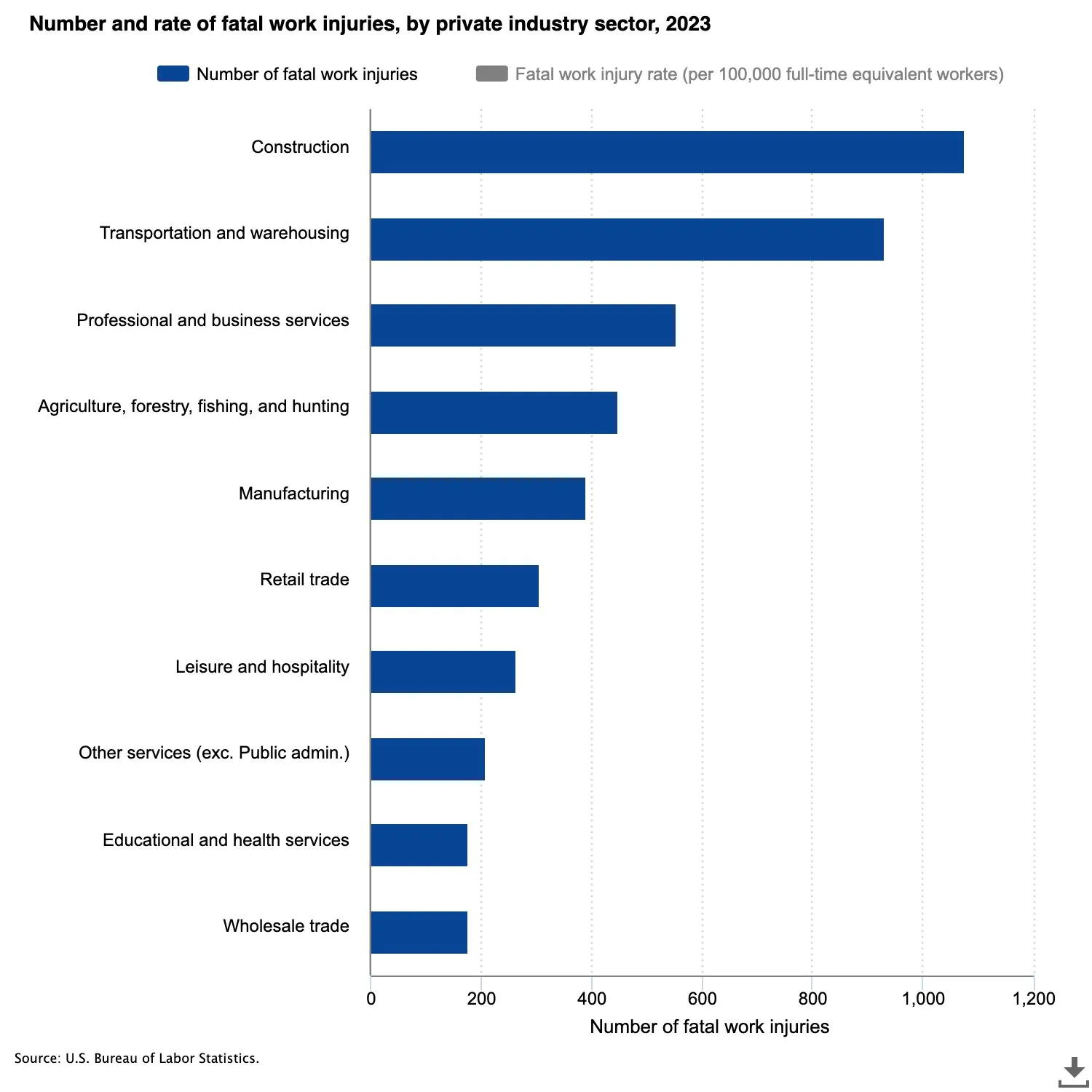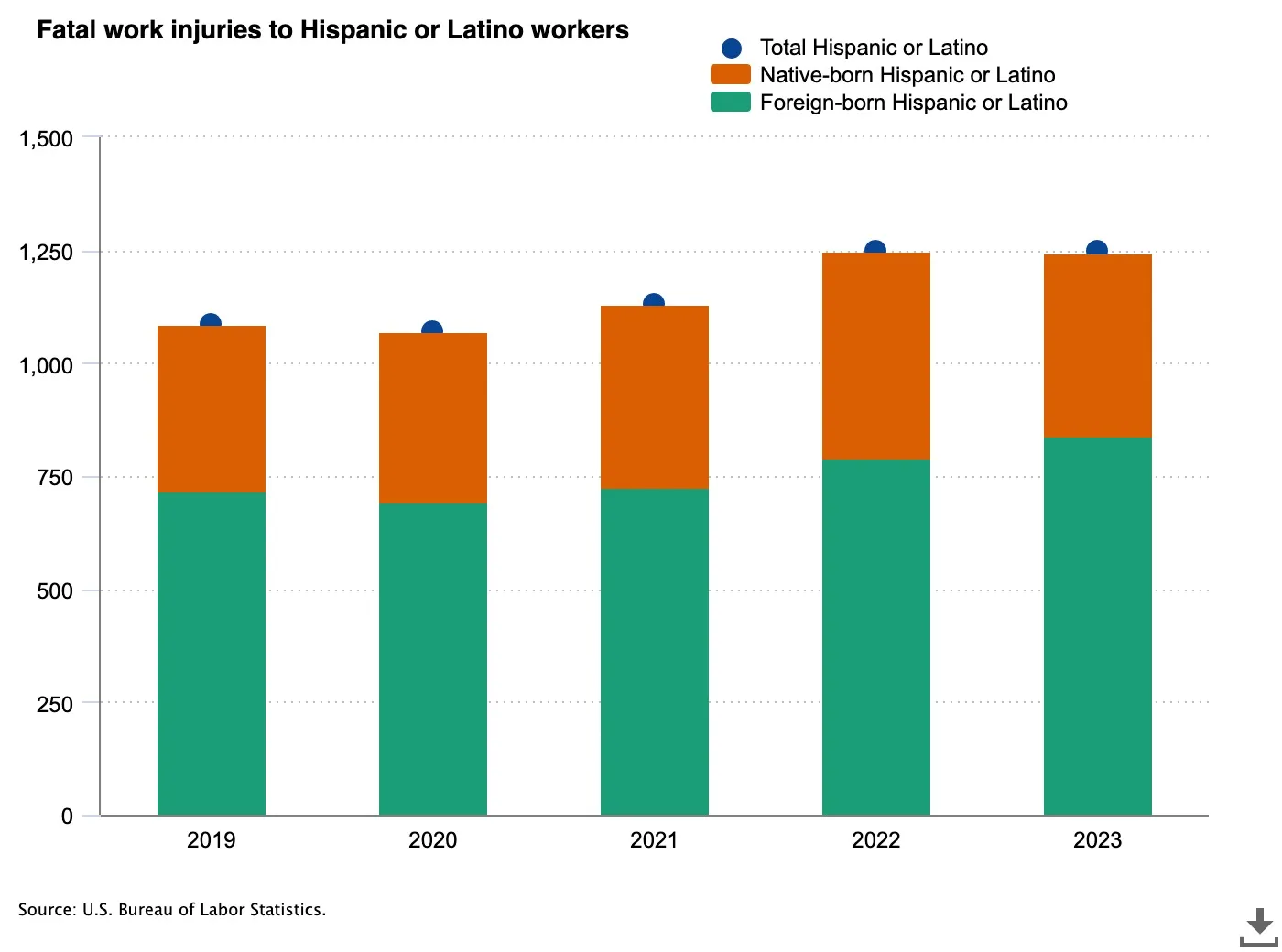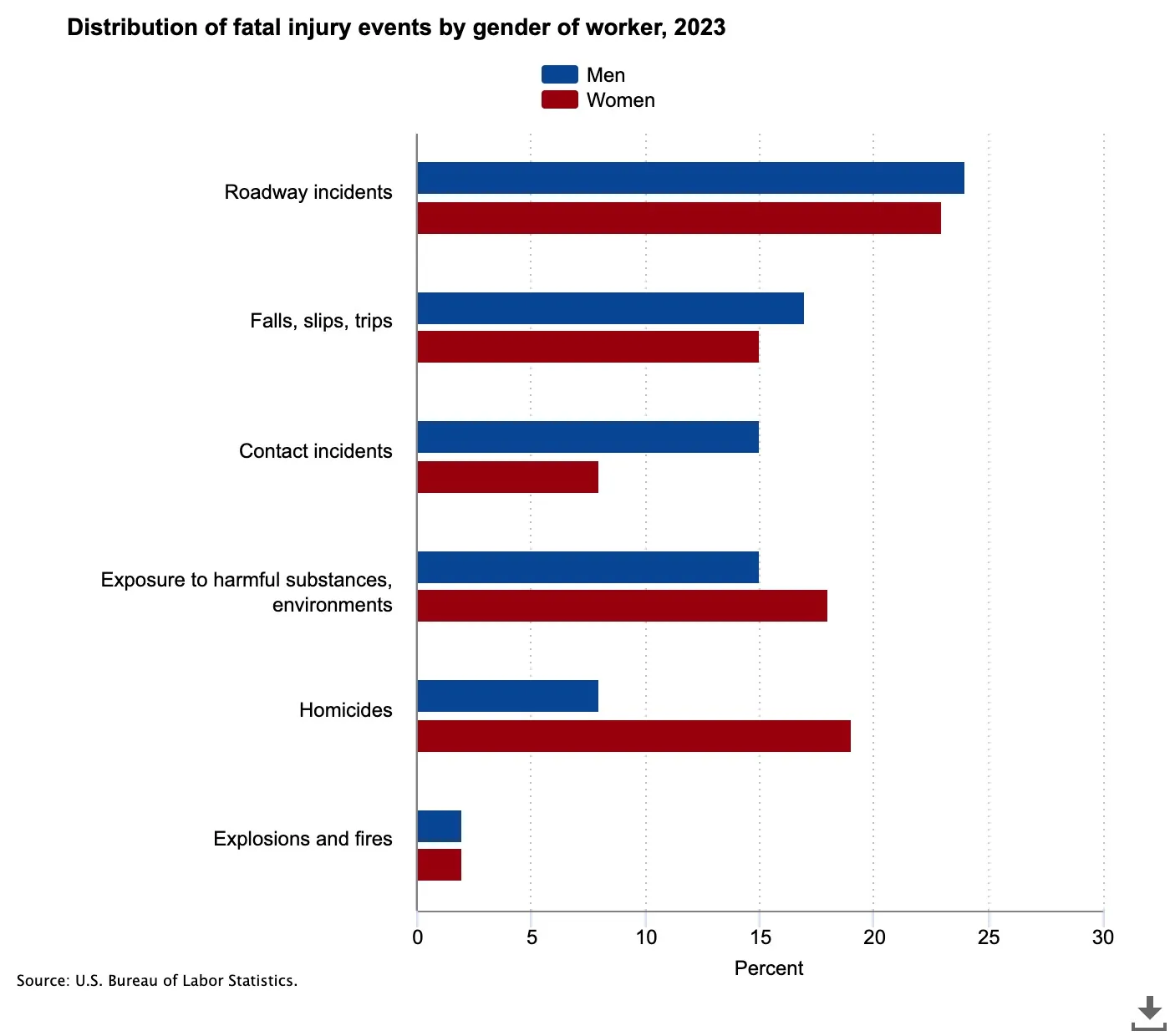
The construction sector recorded its highest number of workplace deaths since 2011, according to newly released federal data, highlighting ongoing safety challenges in one of America's most hazardous industries. While the construction industry saw 1,075 fatalities in 2023, the fatal work injury rate remained stable at 9.6 deaths per 100,000 full-time equivalent workers.
The data, released by the Bureau of Labor Statistics (BLS), reveals that construction accounted for approximately one in five workplace deaths across all U.S. industries in 2023. This sobering statistic underscores the persistent safety challenges facing the sector, despite ongoing efforts to improve workplace safety protocols.
Falls, slips, and trips continue to be the leading cause of death in construction, accounting for 421 fatalities or 39.2% of all construction-related deaths. Notably, the majority of fatal falls (64.4%) occurred from heights between 6 and 30 feet, with portable ladders and stairs being involved in 109 fatalities.

Transportation incidents ranked as the second-highest cause of death, resulting in 240 workplace fatalities. These incidents typically involve injuries or fatalities occurring while employees are operating or working around vehicles.
Other significant causes included exposure to harmful substances and environments (200 deaths), contact incidents (148), violent acts (46), and explosions and fires (17).

While construction recorded the highest number of deaths among private industries, its fatality rate of 9.6 per 100,000 workers ranked third behind agriculture, fishing, forestry and hunting (20.3) and transportation and warehousing (12.9). This distinction is important as it accounts for the relative size of each sector's workforce.
In construction and extraction occupations specifically, there was a slight improvement, with the fatality rate decreasing from 13.0 to 12.9 per 100,000 full-time equivalent workers. Of the 1,055 construction and extraction worker deaths in 2023, 809 were construction tradesworkers.
The data reveals concerning patterns across demographic groups. While the overall fatality rate for U.S. workers in all industries was approximately 3.5 per 100,000 full-time equivalent workers, certain groups faced higher risks. Black or African-American workers experienced a fatality rate of 3.6, while Hispanic or Latino workers faced an even higher rate of 4.4. Of the 1,250 Hispanic or Latino workers who died on the job in 2023, 839 were foreign-born.

Age also appears to be a significant factor, with workers aged 55 to 64 years experiencing the highest number of workplace deaths at 1,089. The 35-44 and 45-54 age groups each recorded over 1,000 occupational deaths. Gender disparities were also evident, with men accounting for 91.5% of all workplace fatalities.

To address these concerning statistics, construction owners and managers should consider implementing the following comprehensive safety measures:
The construction industry's continued high fatality rate demonstrates that safety must remain a top priority for owners and managers. By implementing comprehensive safety programs, investing in proper training and equipment, and fostering a culture of safety, construction owners can work toward reducing these troubling statistics and ensuring their workers return home safely each day.
Success in reducing workplace fatalities requires a sustained commitment from leadership, adequate resources, and ongoing vigilance. The cost of implementing proper safety measures is minimal compared to the immeasurable value of protecting workers' lives and the substantial financial and reputational risks associated with workplace fatalities.